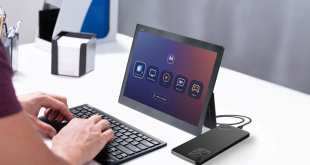The mobile computing space is made up of three main form factors: laptops, tablets and 2-in-1s. Jonathan Easton asks the channel where the market is headed, and what type of device is leading the way.
10 years ago the mobile computing space was, perhaps more than any other in computing and tech, drastically different from what we have today.
In 2007, a 15-inch MacBook Pro weighed 2.4 Kg – the lightest of its size on the market – had a whopping 2GB of DDR2 RAM, a 2.4GHz Intel Core 2 Duo processor, and cost £1,599 (£2,035.93 with inflation). In 2017, a 15-inch MacBook Pro weighs 1.83 Kg, has 16GB of DDR3 RAM, a 2.6GHz quad-core Intel Core i7 processor, and costs £2,349.00.
But there’s more to the mobile space in 2017 than just some beefed up specs and increased prices.
Apple effectively kickstarted the tablet trend in 2010 with the original iPad, and shortly after the entire market was flooded with tablets. Then in 2013, thanks to the innovations brought by Windows 8’s touch-friendly interface, we saw an ever-increasing array of portable computers that share characteristics of both the laptop and the tablet: the 2-in-1.
With its next operating system, Microsoft wanted to rock the boat further. “We wanted to start bringing real innovation to what had been a staid laptop space year in year out,” says product design manager Robert Epstein at the firm (click here to read the full interview). The introduction of Windows 10 brought with it a further focus on the utilisation of different input methods. As a result, 2-in-1s have grown, while both laptops and tablets have become old hat.
“Lack of innovative features in new models are not offering compelling reasons for consumers to renew their device,” says Daniel Gonçalves, senior research analyst at IDC.
IDC predicts that the ‘slate’ tablet’s market share will shrink by 6.5 per cent by 2021, with traditional notebook growth slowing to 0.7 per cent. The big winner is the 2-in-1 which is set to grow by a huge 21.2 per cent.
“I believe that ultimately, 2-in-1’s will become the norm,” comments More Computers’ Danny Mason. “Low-end tablets will still be manufactured, serious gamers will still prefer to play on laptops/desktops (which there will always be a market for) although for the ‘Average Joe’, a 2-in-1 would be more suitable and the ideal option.”
News of the tablet’s demise may be premature however, says Westoast client director Paul Hamilton. “I think there is still tablet demand. Within certain vertical markets we still experience demand for a tablet experience, this is generally led by solution applications.”
But what are the features that consumers look for in a mobile computing device?
“Consumers today are looking for a balance between functionality and design,” says Hamilton. “We are seeing a trend to increased spend as consumers become more design conscious while requiring a loaded configuration.”
“2-in-1s will become the norm.”
Danny Mason, More Computers
Slimline design and portability, more so than power and performance, seem to be the key aspects that shoppers are looking at, says Gfk account manager Amy Cooper. “Consumers appear to be purchasing for agility.”
Ultimately though, a big concern is making sure that this small device can do what users want without any trade-offs, and that’s what we’re getting to with 2-in-1s. “Detachables and Convertibles nowadays can as be as powerful as traditional clamshell notebooks and can replace them without any feature being compromised,” says Gonçalves.
You can therefore start to see a picture of the mobile computing space going forward start to form: the tablet being more of a secondary device, largely replaced by bigger smartphones, and the 2-in-1 being the go-to for the majority of mobile users. But what of the notebook?
What the traditional laptop can do that the tablet and the 2-in-1 can’t is performance computing, and that is where these devices are growing. “We have seen over 40 per cent volume and value growth in Gaming Notebooks,” notes Cooper.
This can, in a big way, be put down to Nvidia’s introduction of its latest GPUs which “for the first time offer equal performance whether running in a desktop or mobile environment”, as Tech Data group marketing director Andy Dow puts it. “This means they are now truly accepted as an enthusiast’s option. We are seeing huge adoption,” Dow adds
This is really where the notebook is unique from its tablet and 2-in-1 counterparts. Not only will it inherently be more capable due to its uncompromising size, but a notebook will have a full keyboard – an aspect which many 2-in-1s still struggle with.
This may therefore mean that the notebook becomes more niche, but the majority of the vendors making them – save for Apple – have also made inroads to the 2-in-1 space. Cooper succinctly surmises: “Gaming and 2-in-1 devices are key opportunities leading the profitability pathway.”
It’ll be interesting to see if the mobile space evolves as predicted, but regardless of whether it is the tablet, the 2-in-1, the laptop or a new form factor leading the way in five or 10 years, the future certainly looks mobile and it’s where the money lies.
 PCR Tech and IT retail, distribution and vendor news
PCR Tech and IT retail, distribution and vendor news


